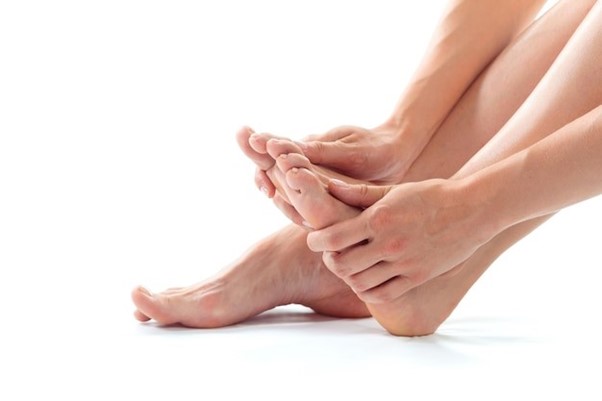Neuromas, also known as nerve tumors or “pinched nerves,” are abnormal growths of nerve tissue that can cause pain and discomfort. These growths are typically benign and can occur anywhere in the body, including the foot and hand. One common type of neuroma is called Morton’s neuroma, which forms between the third and fourth toes.
This article aims to provide insight into neuroma symptoms, causes, and available treatment options to help patients better understand and manage this condition.
Symptoms of Neuromas
Neuromas involve the thickening of nerve tissues, leading to severe nerve pain and abnormal sensations known as dysesthesias.
Allodynia, a type of dysesthesia, causes pain from stimuli that shouldn’t typically cause pain, such as light touches or moderate pressure.
Hyperalgesia, another type, results in an exaggerated response to normally painful stimuli.
Symptoms of Morton’s Neuroma
- Burning pain in the ball of the foot
- Tingling sensations
- Pain exacerbated by wearing tight shoes
- Clicking sensation while walking
People with neuromas are at risk of developing complex regional pain syndrome (CRPS), which can lead to changes in circulation, sweat production, and bone density.
Causes of Neuromas
- Nerve injuries
- Compression
- Excessive stretching
- Surgery
- Certain shoe styles that affect foot alignment
- Genetic abnormalities like flat feet, repetitive stress
- Underlying medical conditions such as rheumatoid arthritis or gout
In the case of Morton’s neuroma, wearing tight or ill-fitting shoes can contribute to its development. It’s essential to address these underlying factors to effectively manage and prevent neuromas.
Diagnosis
Diagnosing a neuroma typically involves:
- Physical examination
- Symptom assessment
- Imaging tests like X-rays or ultrasounds
- Tinel’s test, tapping over the nerve pathway to elicit pain or tingling
Treatment Options
Non-surgical approaches include medications such as tricyclic antidepressants, anticonvulsants, and corticosteroid injections to alleviate pain and inflammation.
Physical therapy techniques like desensitization exercises, electrical stimulation, and ultrasound can also help manage symptoms effectively.
In some cases, surgery may be necessary if conservative treatments fail to provide relief.
Surgical options include decompression, which involves releasing pressure on the nerve by cutting nearby structures, or nerve removal, which may result in permanent numbness in the affected area.
However, surgery carries risks, and it is essential to weigh the benefits and potential drawbacks with your doctor before proceeding.
Prevention Strategies
Preventing neuromas involves lifestyle modifications and proactive measures to reduce risk factors. For Morton’s neuroma, wearing supportive, comfortable shoes with adequate toe space and avoiding tight footwear can help alleviate pressure on the nerves.
Additionally, resting and icing the affected area after activity, using shoe inserts for added support, and adapting activities to reduce stress on the foot can contribute to prevention efforts.
Neuromas can be challenging to manage, but with proper diagnosis and treatment, symptoms can often be effectively relieved. If you are experiencing symptoms of a neuroma, do not hesitate to consult your doctor for personalized evaluation and management recommendations tailored to your needs.





